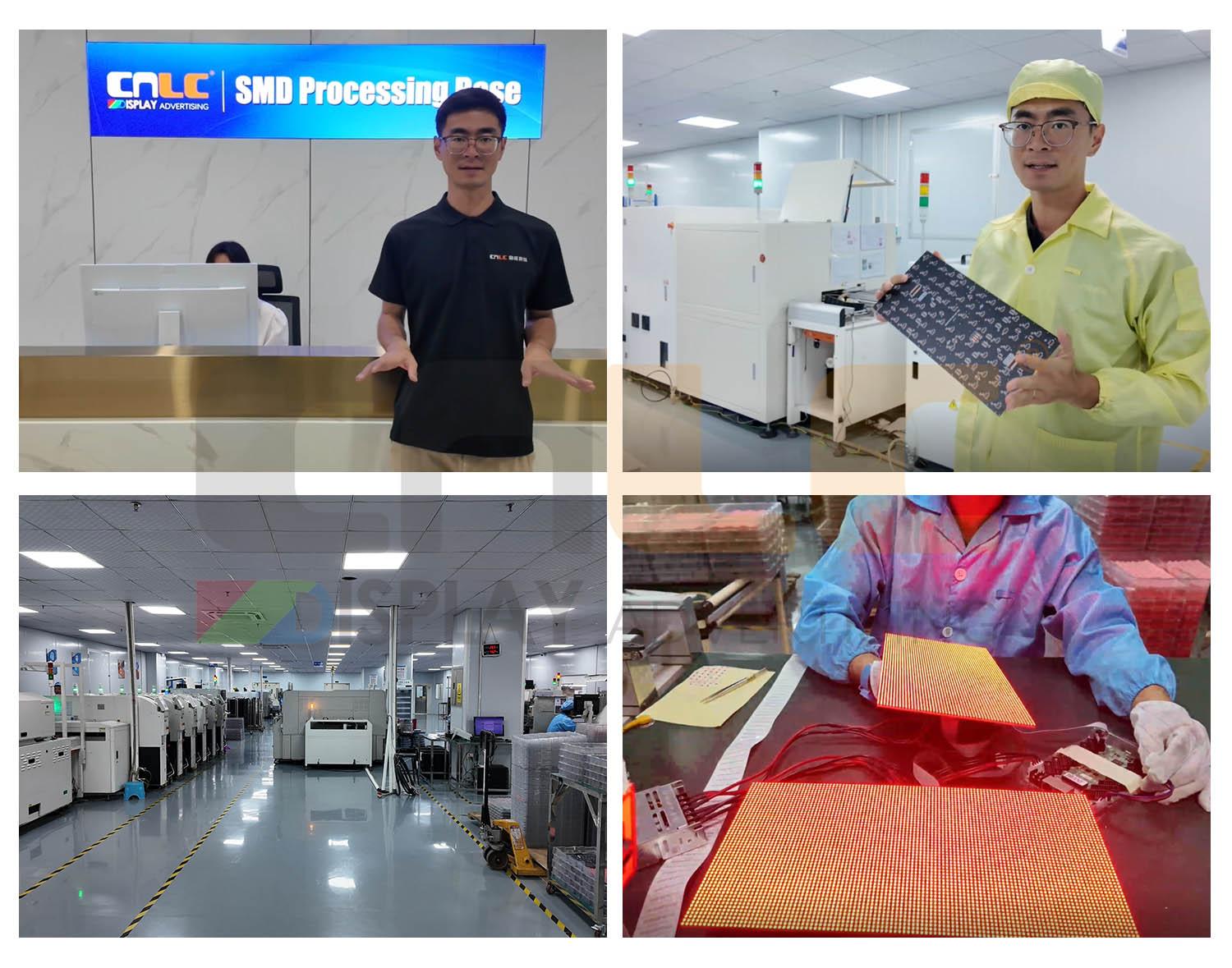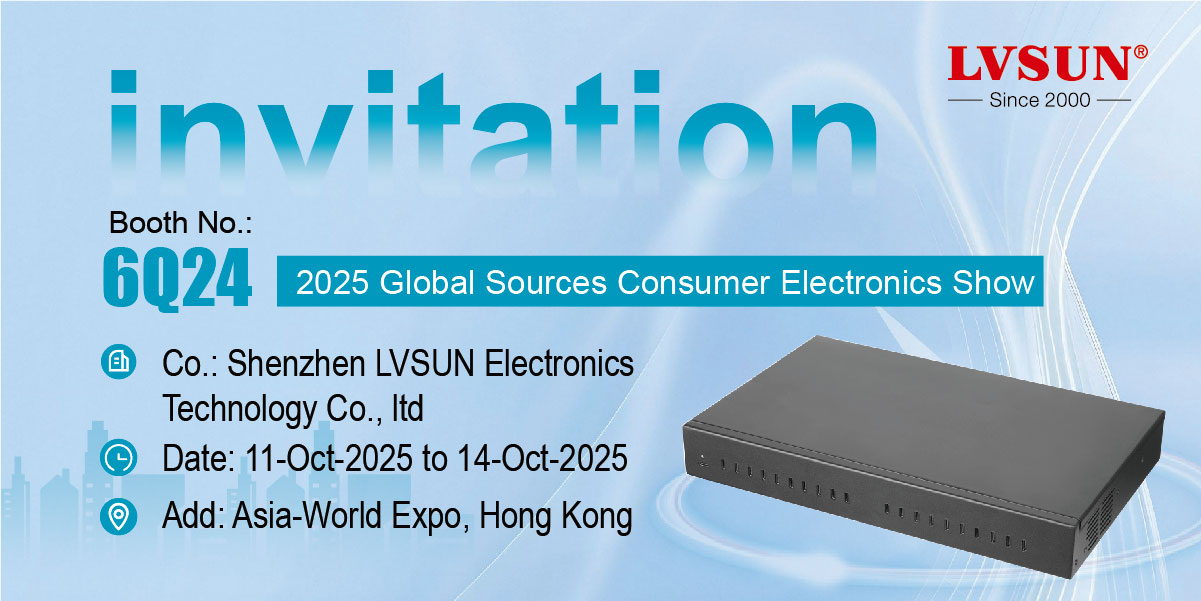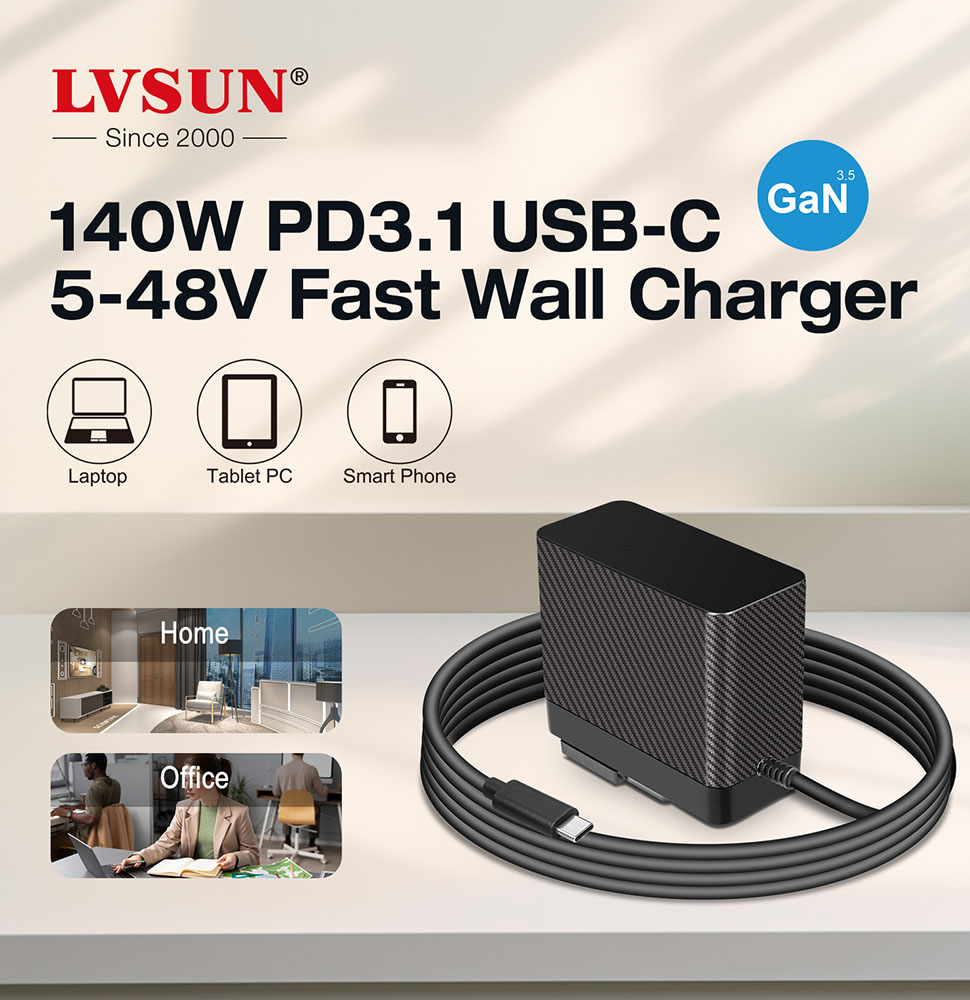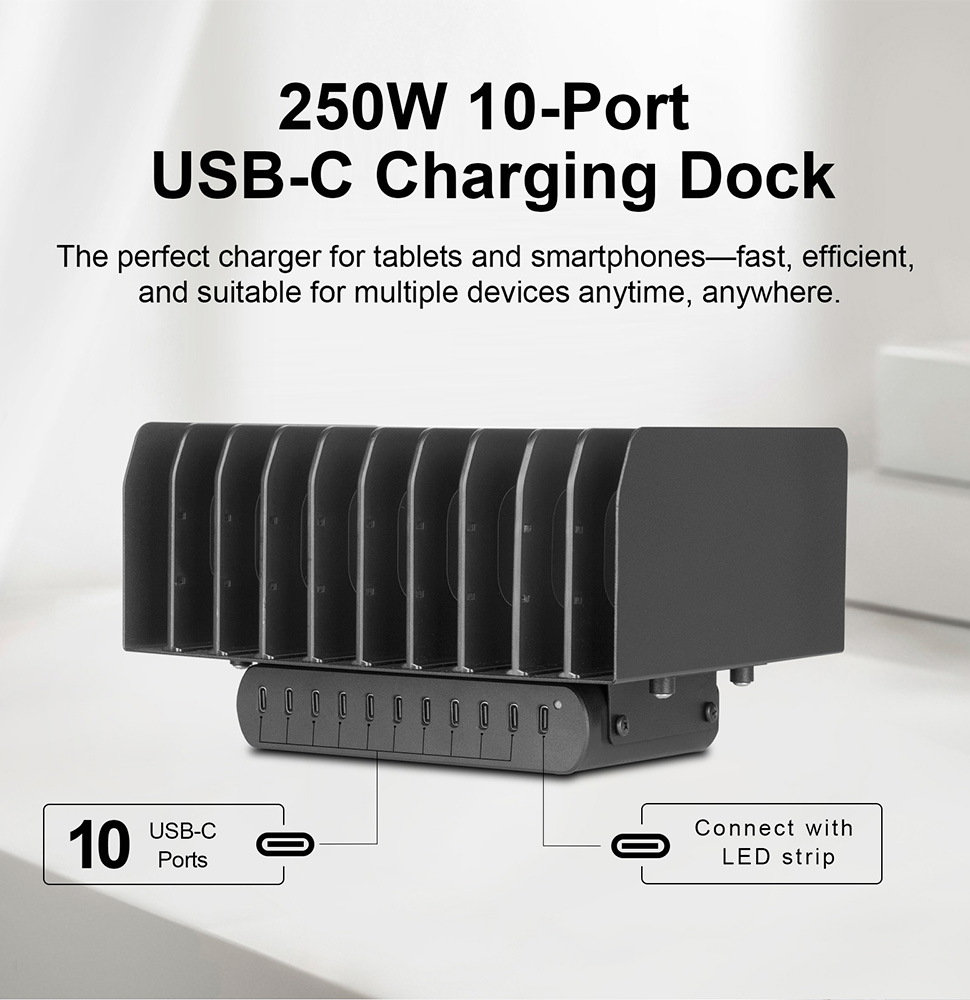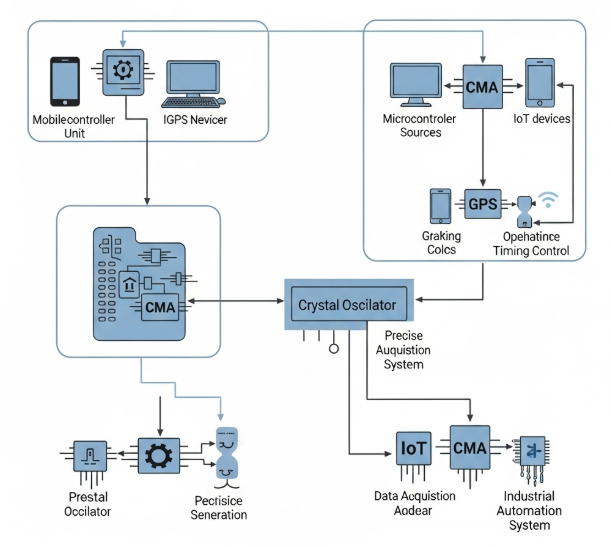WAIN “High-Voltage Connector Series for Special Vehicles” is a high-performance, compact alloy-shell interconnect solution designed for construction machinery, commercial vehicles, and other special-purpose vehicles.
This solution features a unique design and advanced manufacturing process, delivering electrical ratings of up to 1500V DC and 500A Max. It is equipped with IP67/IP69K level protection and 360° electromagnetic shielding for optimal durability and reliability.
Additionally, it offers multiple keying options, both angled and straight cable outlet configurations, and supports up to three contact positions, accommodating cable sizes ranging from 2.5mm² to 120mm².
This connector series is widely used in the power distribution systems of various vehicles, including automobiles, trucks, buses, agricultural vehicles, construction vehicles, and off-road vehicles, as well as in the power supply applications of agricultural, construction, and off-road machinery.
WAIN Automotive I New Energy Vehicle Charging Series
In the new energy sector, WAIN primarily provides essential services to electric vehicle manufacturers and supports traditional construction machinery companies transitioning toward new energy solutions. WAIN has successfully developed a comprehensive range of products compliant with GB/T 20234.1 and IEC 62196.2 standards, including GB/T AC/DC charging sockets, GB/T AC charging guns, and Type 2 charging guns and sockets. Particularly notable is the PCBA quick-change terminal version of the GB/T DC charging socket, which significantly enhances efficiency and reduces costs in wiring harness applications and maintenance.
In addition to supporting mass production for customers in the construction machinery and electric vehicle sectors, WAIN proactively aligns with industry trends in electric vehicle technology, especially battery-swapping solutions. The company continuously develops innovative products tailored to customer needs, providing diverse options to enhance battery-swapping systems.
CIQTEK at M&M 2025 Advancing Our North American Electron Microscopy Journey
CIQTEK successfully concluded a dynamic and rewarding week at Microscopy & Microanalysis 2025 (M&M 2025), one of the most influential events in the global microscopy community. This marks another important milestone as we continue to expand our presence in the North American electron microscopy market.
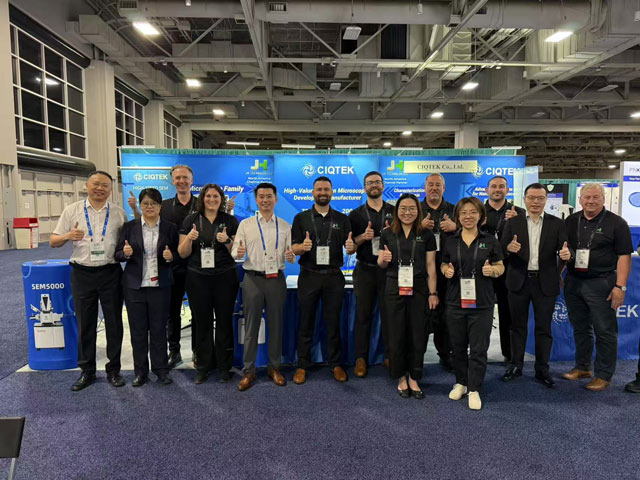
At the booth, our team engaged with a wide range of researchers and professionals from materials science, life science, and beyond. We showcased our latest innovations in high-performance field emission scanning electron microscopy (FESEM), with a focus on imaging speed, resolution, and user-friendly operation. The strong interest and positive feedback we received on-site reaffirmed the value of our technologies to the scientific community.
A key highlight of the event was our well-attended Vendor Tutorial, featuring CIQTEK electron microscopy expert Mr. Luke Ren. His presentation on high-speed FESEM (HEM) imaging sparked insightful discussions and active engagement from the audience. We were excited to see the high level of interest, and we sincerely thank everyone who participated and contributed to the success of this session.
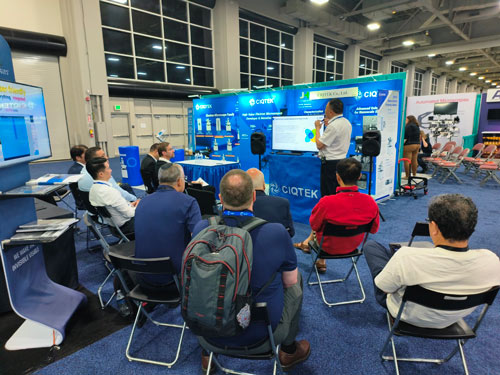
We also extend our heartfelt thanks to our trusted U.S. distributor, JH Technologies, for their outstanding support throughout the event. Their professionalism and dedication played a crucial role in helping us connect with more users and partners nationwide. Together, we are building a stronger foundation for CIQTEK's long-term growth in North America.
M&M 2025 was not just a trade show; it was a meaningful step forward in our journey to bring cutting-edge electron microscopy solutions to more scientists and institutions. We are energized by the conversations and inspired by the collaborations, and we are already looking ahead to future opportunities.
We look forward to seeing you at M&M 2026 in Milwaukee!
Are You Ready to Join LVSUN at the 2025 Global Sources Consumer Electronics Show?
We are excited to announce that Shenzhen LVSUN Electronics Technology Co., Ltd. will be exhibiting at the 2025 Global Sources Consumer Electronics Show! The event will take place from October 11 to October 14, 2025, at the AsiaWorld-Expo in Hong Kong. As a premier industry event, it brings together leading companies and innovative technologies from around the world—a perfect platform to explore the latest trends in consumer electronics.
Welcome to visit LVSUN at Booth No. 6Q24 to experience our newest products and innovative solutions firsthand. At LVSUN Electronics, we are dedicated to high-quality electronic devices and using technology to enhance everyday life. During the exhibition, we will showcase a range of eagerly anticipated new products and look forward to engaging with you.
Don’t miss this fantastic opportunity to connect face-to-face with industry professionals! We invite you to join us at the AsiaWorld-Expo in Hong Kong from October 11 to 14, 2025, for the Global Sources Consumer Electronics Show. We look forward to welcoming you at Booth 6Q24 and exploring new possibilities together!
What is a GAN3.5 PD Charger?
With the widespread use of smart devices, the performance and portability of chargers have become key concerns for users. In recent years, GAN (Gallium Nitride) chargers have gradually entered the public eye, becoming representatives of efficient and lightweight charging solutions. A "GAN PD charger" specifically refers to a charger that uses gallium nitride technology to support the PD (Power Delivery) protocol, enabling fast and safe high-power charging for a variety of devices.
The LVSUN 140W GAN charger adopts the industry-leading GAN3.5 technology. This innovative advancement significantly enhances charging speed and stability. Compared to traditional silicon-based chips, GAN3.5 technology not only achieves higher efficiency but also reduces heat generation and energy loss, ensuring a safer and more efficient charging process, thereby providing users with a faster charging experience.
With a power density of up to 1.08 W/cm³, this GAN3.5 USB-C charger delivers powerful charging capacity despite its small size. Its compact and lightweight design allows users to carry it effortlessly, whether at home, in the office, or on the go. There is no need to worry about insufficient charging power for your devices. Whether it's a smartphone, tablet, or laptop, it can meet the charging needs of multiple devices in one go.
In recent years, GAN technology has continuously pushed the limits of charging device performance. The LVSUN 140W GAN3.5 PD3.1 charger exemplifies this innovation. Combining high efficiency, stability, and portability, it brings a safe, quick, and anytime-anywhere charging experience to users. As GAN technology continues to advance, the way we charge our smart devices is expected to become even smarter and more convenient.
Why a 250W 10-Port USB-C Charging Dock Be Your Perfect Charging Partner?
Managing multiple devices can be chaotic, but the 250W 10-Port USB-C Charging Dock offers a sleek, efficient solution. With 10 USB-C ports, it can simultaneously charge up to ten smartphones or tablets, making it perfect for busy homes, offices, or public spaces.
This compact dock delivers fast, reliable power thanks to advanced technologies like PD 3.0, QC 5.0, and PPS, compatible with many brands. Its high 250W power output ensures rapid charging, saving time and reducing clutter with neatly stored cables.
Designed for convenience, the dock’s slim profile makes it easy to store and transport, keeping your space tidy. Whether in a conference room or at home, it’s an ideal device to keep multiple gadgets charged and ready.
This all-in-one charging hub makes device management effortless. Is it the perfect solution for powering your home or office?
AFM Publication CIQTEK SEM Aids in Hard Carbon Morphology Study
Sodium-ion batteries (SIBs) are attracting attention as a cost-effective alternative to lithium-ion batteries, thanks to the abundant sodium content in Earth’s crust (2.6% vs. 0.0065% for lithium). Despite this, SIBs still lag in energy density, highlighting the need for high-capacity electrode materials. Hard carbon is a strong candidate for SIB anodes due to its low sodium storage potential and high capacity. However, factors like graphite microdomain distribution, closed pores, and defect concentration significantly impact initial Coulombic efficiency (ICE) and stability. Modification strategies face limits. Heteroatom doping can raise capacity but reduce ICE. Traditional CVD helps form closed pores but suffers from slow methane decomposition, long cycles, and defect buildup.
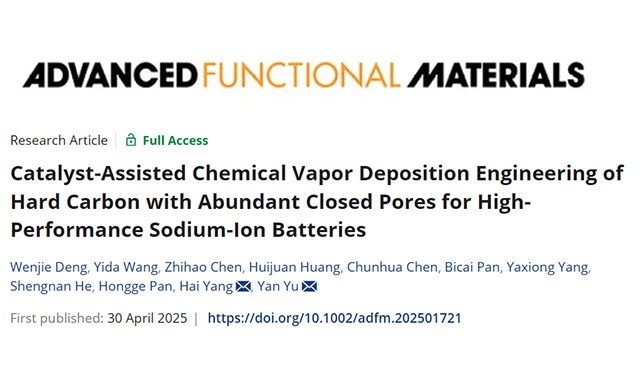
Professor Yan Yu’s team at the University of Science and Technology of China (USTC) utilized the CIQTEK Scanning Electron Microscope (SEM) to investigate the morphology of various hard carbon materials. The team developed a catalyst-assisted chemical vapor deposition (CVD) method to promote CH₄ decomposition and regulate the microstructure of hard carbon. Transition metal catalysts such as Fe, Co, and Ni effectively lowered the energy barrier for CH₄ decomposition, thereby improving efficiency and reducing deposition time.
However, Co and Ni tended to cause excessive graphitization of the deposited carbon, forming elongated graphite-like structures in both lateral and thickness directions, which hindered sodium-ion storage and transport. In contrast, Fe facilitated appropriate carbon rearrangement, resulting in an optimized microstructure with fewer defects and well-developed graphite domains. This optimization reduced irreversible sodium storage, enhanced initial Coulombic efficiency (ICE), and increased the availability of reversible Na⁺ storage sites.
As a result, the optimized hard carbon sample (HC-2) achieved an impressive reversible capacity of 457 mAh g⁻¹ and a high ICE of 90.6%. Moreover, in-situ X-ray diffraction (XRD) and in-situ Raman spectroscopy confirmed a sodium storage mechanism based on adsorption, intercalation, and pore filling. The study was published in Advanced Functional Materials under the title:
Catalyst-Assisted Chemical Vapor Deposition Engineering of Hard Carbon with Abundant Closed Pores for High-Performance Sodium-Ion Batteries.
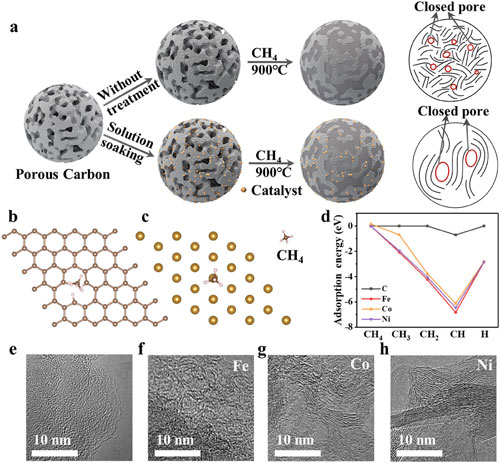
As illustrated in Figure 1a, the hard carbon was synthesized via a catalyst-assisted chemical vapor deposition (CVD) method using commercial porous carbon as the precursor and methane (CH₄) as the feed gas. Figure 1d shows the adsorption energies of CH₄ and its dehydrogenated intermediates on metal catalysts (Fe, Co, Ni) and porous carbon surfaces, indicating that the introduction of metal catalysts lowers the energy barrier for CH₄ decomposition, with Fe being the most effective in promoting the breakdown of CH₄ and its intermediates.
High-resolution TEM (HRTEM) images under different catalyst conditions (Figures 1e–h) reveal that:
-
Without a catalyst, the hard carbon exhibits a highly disordered structure rich in defects.
-
With Fe as the catalyst, the resulting hard carbon features short-range ordered graphite-like microcrystals and closed pores embedded between graphite domains.
-
Co promotes the expansion of graphite domains and increases the number of graphite layers.
-
Ni leads to a graphitic structure and even the formation of carbon nanotubes, which, despite their high order, are unfavorable for sodium-ion storage and transport.
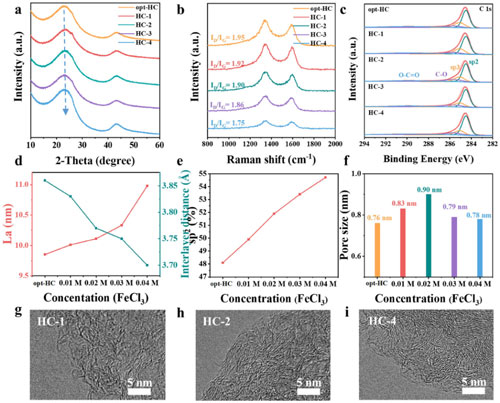
Figure 2 presents the structural characterization results of hard carbon materials prepared with varying concentrations of FeCl₃. The XRD patterns (Figure 2a) and Raman spectra (Figure 2b) indicate that as the FeCl₃ concentration in the impregnation solution increases, the graphite interlayer spacing gradually decreases (from 0.386 nm to 0.370 nm), the defect ratio (ID/IG) decreases, and the lateral crystallite size (La) increases. These changes confirm that Fe catalyzes the rearrangement of carbon atoms, enhancing the degree of graphitization.
X-ray photoelectron spectroscopy (XPS) results (Figures 2c and 2e) show that with increasing Fe catalyst concentration, the proportion of sp²-hybridized carbon in hard carbon increases, further indicating improved graphitization. At the same time, the oxygen content in the hard carbon decreases, which may be attributed to hydrogen (H₂) generated from CH₄ decomposition consuming oxygen during carbonization, thereby reducing surface oxygen-related defects.
Small-angle X-ray scattering (SAXS) analysis (Figure 2f) reveals average closed-pore diameters of 0.76, 0.83, 0.90, 0.79, and 0.78 nm, respectively. Larger closed pores are beneficial for stabilizing sodium clusters and improving Na⁺ transport kinetics.
HRTEM images (Figures 2g–i) show small graphite domains at low Fe loading, while excessive catalyst loading leads to long-range ordered structures with narrower interlayer spacing, which can hinder Na⁺ transport.
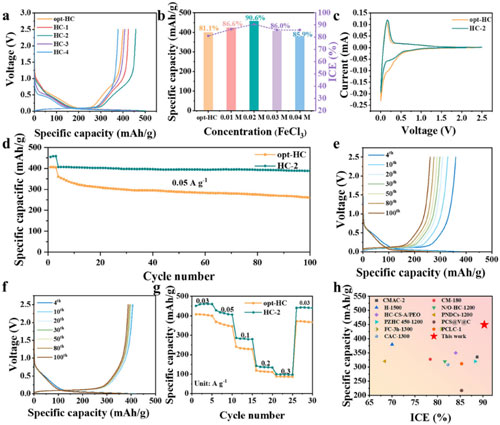
Figure 3 shows the effect of different Fe catalyst loadings on the electrochemical performance of hard carbon materials. Galvanostatic charge–discharge tests (Figure 3a) reveal that as the concentration of FeCl₃ in the impregnation solution increases, HC-2 (0.02 M FeCl₃) exhibits the best performance, with a reversible capacity of 457 mAh g⁻¹ and a high initial Coulombic efficiency (ICE) of 90.6%. The low-voltage plateau accounts for a significant portion of the capacity (around 350 mAh g⁻¹), indicating the advantage of closed pores in sodium storage.
Excessive catalyst loading (e.g., HC-4) leads to a decrease in capacity (377 mAh g⁻¹) due to the over-ordering of carbon layers, highlighting the need to balance graphite domain growth and sodium-ion transport pathways. After 100 cycles at a current density of 0.5 A g⁻¹, the capacity remains at 388 mAh g⁻¹, demonstrating that larger closed pores enhance the stability of Na clusters and improve Na⁺ transport kinetics.
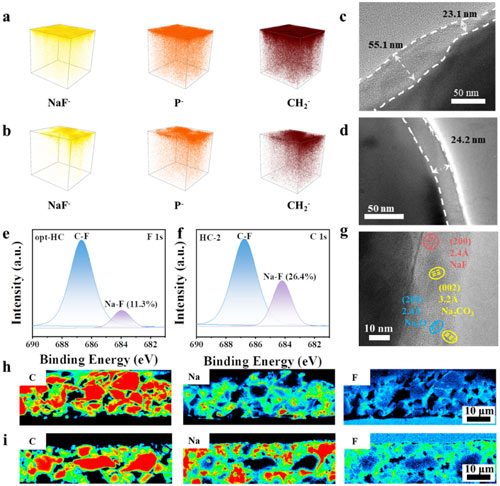
Figure 4 shows the SEI structure on different hard carbon surfaces: (a) and (b) depict the depth profiles and distributions of NaF⁻, P, and CH₂ species in opt-HC and HC-2, respectively. (c) and (d) present TEM images of opt-HC and HC-2 after 10 cycles at 30 mA g⁻¹. (e) and (f) display the XPS spectra of opt-HC and HC-2 after 10 cycles at 30 mA g⁻¹. (g) shows the HRTEM image of HC-2 after 10 cycles at 30 mA g⁻¹. EPMA mapping images of the electrode cross-sections for (h) opt-HC and (i) HC-2 are shown after the first cycle.
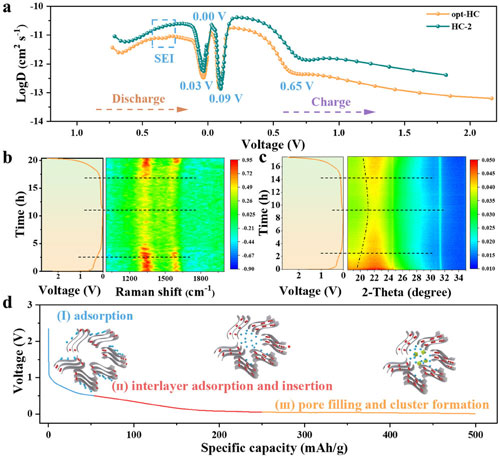
As shown in Figure 5, the GITT curves (Figure 5a) reveal that the Na⁺ diffusion coefficient (DNa⁺) of HC-2 is higher than that of opt-HC, indicating that HC-2 exhibits faster kinetics and enables quicker Na⁺ diffusion.
The in situ Raman spectra (Figure 5b) show that during discharge from open-circuit voltage to approximately 0.7 V, the D-band gradually broadens while the G-band remains relatively unchanged, suggesting that sodium storage at this stage is dominated by surface adsorption. As discharge proceeds further, the D-band intensity weakens and the G-band redshifts, indicating that Na⁺ begins to intercalate into graphene layers. After reaching the plateau near 0.05 V, the G-band stabilizes, implying that Na⁺ fills into the closed pores.
In the in situ XRD patterns (Figure 5c), the (002) peak intensity of HC-2 significantly decreases at lower angles during discharge, confirming Na⁺ intercalation between graphene layers. Compared to opt-HC, the (002) peak shift in HC-2 is more pronounced, indicating a greater extent of Na⁺ intercalation into the carbon layers, contributing to its higher capacity.
Together, Figures 5b and 5c illustrate that the sodium storage mechanism involves: (1) Na⁺ adsorption, (2) Na⁺ interlayer adsorption/intercalation, and (3) Na⁺ pore filling and clustering.
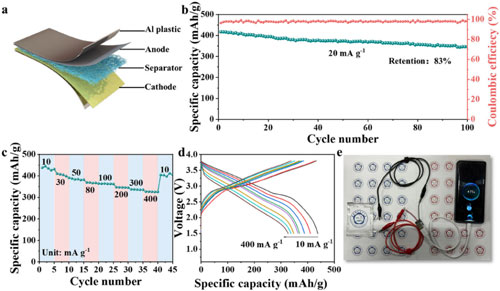
Figure 6 illustrates the electrochemical performance of a full cell assembled using the HC-2 anode and an O3-type NaNi₁/₃Fe₁/₃Mn₁/₃O₂ cathode. The cell demonstrates excellent rate capability and long-term cycling stability under various current densities, confirming the potential of the HC-2 anode for practical battery applications.
Professor Yu Yan’s team proposed a novel catalyst-assisted chemical vapor deposition (CA-CVD) method that enables the precise synthesis of hard carbon anodes featuring abundant closed pores, well-developed graphitic domains, and controllable defects. The optimized HC-2 anode exhibits a high reversible capacity of 457 mAh g⁻¹ and an impressive initial Coulombic efficiency of 90.6%. When paired with an O3-type layered cathode in a soft-packed full cell, the battery retains 83% of its capacity after 100 cycles, maintaining a reversible capacity above 400 mAh g⁻¹.
This method not only offers a new route for the controlled fabrication of high-capacity and high-efficiency hard carbon anodes but also provides mechanistic insights into sodium storage behavior, supporting further optimization of material systems. It holds significant promise for advancing high-energy-density sodium-ion battery (SIB) technologies toward practical applications.
What is the most stable atomic clock?
CNLC at ISE 2025 Elevating Outdoor Digital Signage with Innovation
The Integrated Systems Europe (ISE) 2025 is in full swing, and CNLC is proud to be part of this global event, showcasing our latest LED & LCD digital signage solutions. As a leader in outdoor digital advertising displays, CNLC continues to push the boundaries of innovation, delivering high-brightness, durable, and energy-efficient signage solutions for various industries.
Whether you’re looking for weather-resistant LED billboards, smart city digital displays, or high-impact retail signage, CNLC is here to transform your digital advertising strategy.
Why CNLC’s Digital Signage Stands Out at ISE 2025
At ISE 2025, Hall 5 - 5R550, CNLC is unveiling its latest advancements in aluminum-structured digital signage. Our industry-leading displays are designed to perform in challenging outdoor environments, ensuring high visibility, durability, and efficiency.
Key Features of CNLC’s Digital Signage Solutions:
✅ High-brightness LED & LCD displays for enhanced visibility in all lighting conditions
✅ Aluminum-structured enclosures for superior durability and heat dissipation
✅ IP-rated weatherproof designs to withstand rain, dust, and extreme temperatures
✅ Energy-efficient technology, reducing operational costs
✅ Smart connectivity options, including remote content management and interactive displays
✅ SKD (Semi-Knocked Down) design for flexible assembly and cost-effective shipping
Our team has been actively engaging with industry professionals, discussing how digital signage is shaping the future of advertising, smart cities, and public information systems.
Experience CNLC’s Latest Digital Signage Innovations
ISE is the ultimate platform to explore cutting-edge display technology. If you haven’t visited us yet, there’s still time to experience our high-performance LED & LCD solutions at Hall 5 - 5R550. Our expert team is ready to provide live demonstrations, answer your questions, and discuss customized digital signage solutions for your business.
? Watch Our ISE 2025 Highlights!
Couldn’t make it to the event? Don’t worry! We’ve captured all the action—watch our event highlights video to see our digital signage solutions in action and hear from our team of experts.
Let’s Stay Connected!
ISE 2025 may be coming to an end, but our commitment to revolutionizing digital signage continues. If you’re looking for customized LED & LCD display solutions for your business, get in touch with CNLC today!
? Contact us for product inquiries and partnerships: Click Here
? Explore our full product range: Visit Our Website
? Join us at ISE 2025, Hall 5 - 5R550, and discover the future of digital signage!
About CNLC
With over 18 years of experience, CNLC is a trusted OEM/ODM manufacturer of outdoor digital signage solutions. Our high-brightness LED & LCD displays are widely used in smart cities, transportation hubs, retail, and outdoor advertising. We are committed to quality, innovation, and sustainability, helping businesses worldwide enhance their digital advertising strategies.
CNLC LED Modules Precision Glue Dispensing and Push Force Testing for Superior Reliability
At CNLC, durability is engineered from the inside out. Our outdoor LED display products are built on a high-strength aluminum structure, offering superior heat dissipation, corrosion resistance, and structural stability in extreme weather. But beyond the outer shell, what truly ensures long-term performance lies within — the reliability of the LED module.
Whether used in outdoor LED billboards, smart city pole displays, or rental LED screens, every CNLC module is manufactured with strict structural testing, precise glue dispensing, and mechanical reinforcement. In this article, we present test results from our P2.976 SMD1415 module (250×500mm) to illustrate the quality control system applied across all CNLC LED modules.
🔹 Why Glue Dispensing Matters in Outdoor LED Module Design
All CNLC outdoor LED modules use precise glue dispensing along the PCB edges (not on LED surfaces), which significantly enhances:
-
Waterproof sealing (higher IP rating)
-
Structural reinforcement (anti-vibration and anti-deformation)
-
Anti-drop protection for LED lamps during transport and impact
🔹 Real Test Data: Push Force Before & After Glue Application
To verify glue reinforcement, we performed push force tests on a P2.976 module before and after glue application. Results show substantial strength improvements across both sides:
| Module Side | Before Glue | After Glue |
| Pin Side | 2.6–3.0 kg.f | 4.8–5.5 kg.f |
| Non-Pin Side | 2.4–2.6 kg.f | 4.7–6.14 kg.f |
This level of reinforcement is applied across all CNLC modules, making our products more resistant to physical stress, transportation shock, and thermal expansion.
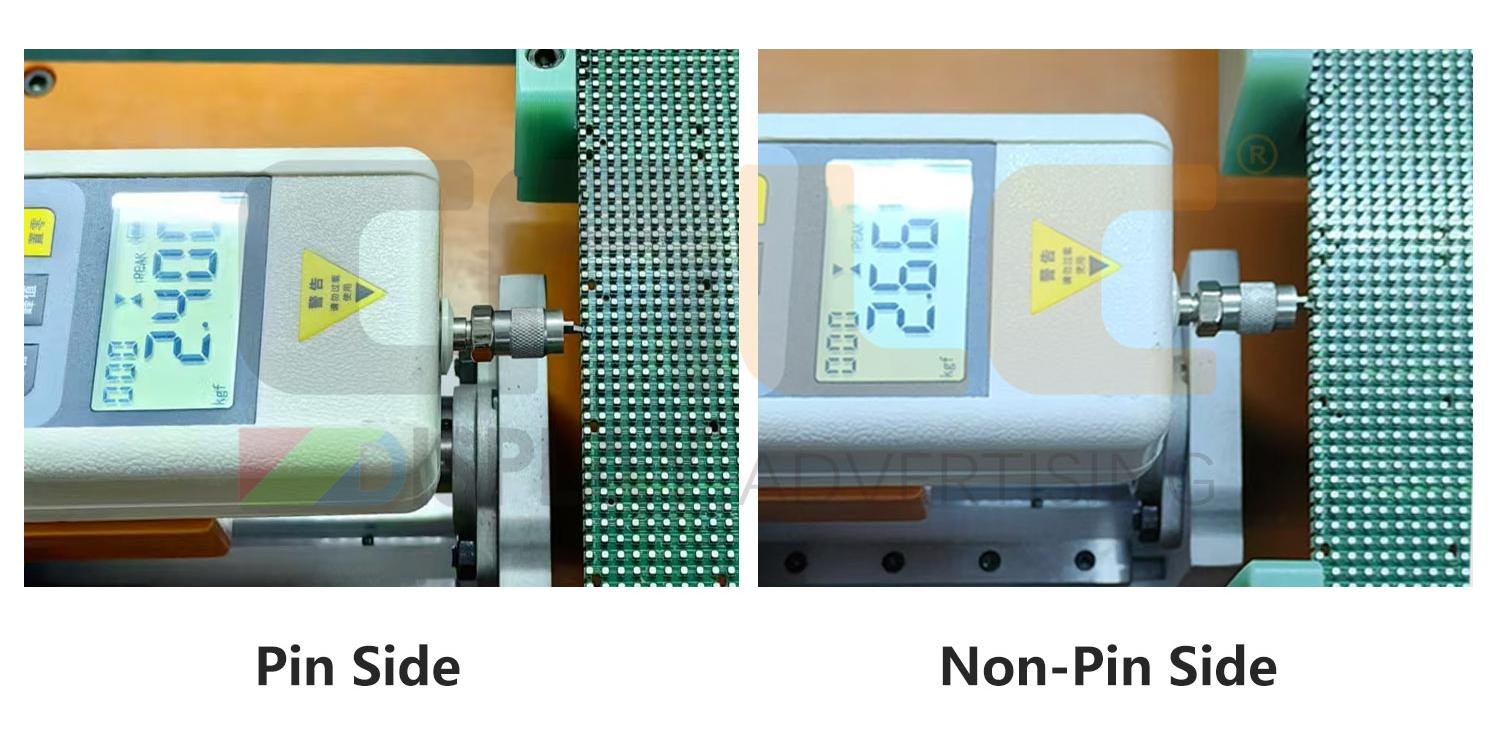
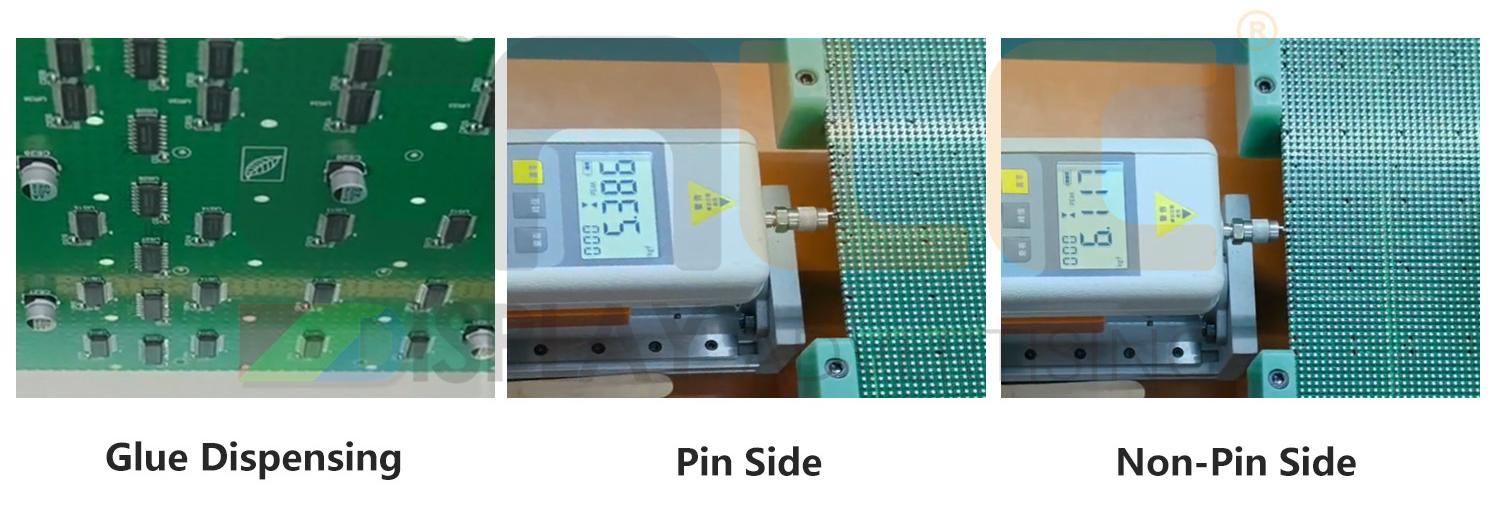
🔹 High-Temperature Curing Process Ensures Bonding Stability
After glue application, all CNLC LED modules are placed in 130°C curing ovens for 40 minutes, ensuring full adhesive bonding and long-term durability:
-
Tightly bonded structural layers
-
Enhanced temperature resistance
-
Stable structure even under high humidity and UV exposure
✅ CNLC LED Modules: Built for Harsh Outdoor Environments
With glue dispensing, push-pull force testing, and high-temperature curing as standard practices, CNLC applies a unified manufacturing protocol across all LED modules, regardless of pixel pitch or screen size.
-
✅ Preventing LED lamp failure and drop-off
-
✅ Achieving waterproof, shockproof, and anti-deformation reliability
-
✅ Extending product lifespan in outdoor conditions
CNLC always starts with the structural integrity of the LED module to ensure the safety, stability, and long-term reliability of the display during outdoor operation.
With our in-house SMT factory, fully automated module production lines, and high-temperature curing process, we achieve a vertically integrated manufacturing workflow — from component placement to finished module delivery — providing customers with higher-quality and more efficient LED module solutions.
